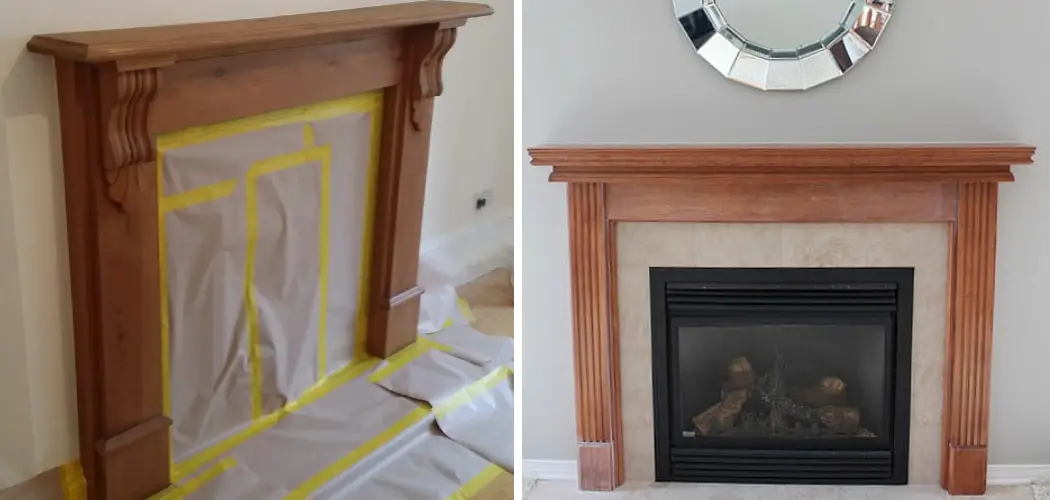Are you looking to give your living space a new, stylish facelift? Painting your wooden fireplace can be an effective way to do just that. Not only can it add a splash of color or contrast to any room, but it can also protect the wood from weathering and enhance its lifespan.
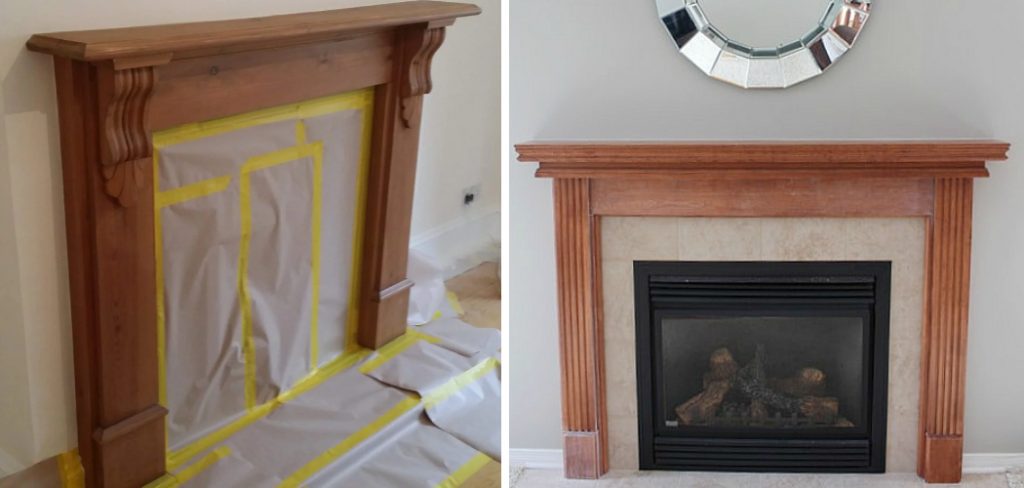
Although the painting process might seem daunting at first glance, there’s no need to worry; with just a few simple steps and helpful local tips, you can spruce up your place quickly!
In this blog post, we’ll walk through everything you need to know about how to paint a wooden fireplace – from prepping the surface to finishing touches – so follow along for some great advice on getting started today!
What Will You Need?
Before you start painting your wooden fireplace, you’ll need some supplies to complete the job. Make sure to gather up items such as:
- Masking tape
- Drop cloths
- Primer
- Paintbrush or roller
- Paint (if desired)
Pick up a sanding block and some scrapers, depending on the condition of your fireplace.
8 Easy Steps on How to Paint a Wooden Fireplace
Step 1: Protect Your Surroundings
The first step in painting your wooden fireplace is to protect your surroundings. You wouldn’t want paint splatters on your beautiful hardwood floors or favorite area rug! Start by laying drop cloths around the area where you’ll be working. Next, use masking tape to cover any adjacent walls, furniture, or fixtures that could get paint on them. This precautionary step is crucial and will save you much cleanup time later.
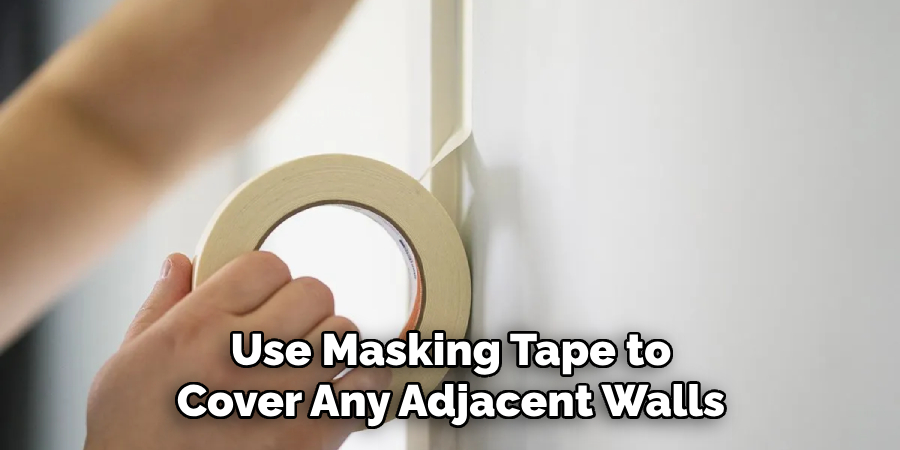
Step 2: Prepare the Fireplace
The second step involves preparing the fireplace for painting. If there’s existing paint or varnish on your wooden fireplace, you’ll need to sand it down to create a smooth, clean surface for the primer and paint to adhere to. Use a sanding block or an electric sander if you have one, and make sure to wear a dust mask for safety.
Once you’ve sanded the surface, wipe it down with a damp cloth to remove any remaining dust particles. If there are any cracks or gaps in the wood, now is a good time to fill them with wood filler. Allow the filler to dry fully before moving on to the next step.
Step 3: Apply Primer
Once your fireplace is clean and smooth, it’s time to apply the primer. Primer helps the paint adhere better to the wood and can cover any residual stains or knots in the wood. Using your paintbrush or roller, apply a coat of primer evenly across the entire fireplace surface.
Be sure to get into every nook and cranny for a uniform result. Allow the primer to dry fully, according to the manufacturer’s instructions. If your wooden fireplace was previously painted with a dark color or has visible stains, apply a second coat of primer to ensure optimal coverage.
Step 4: Paint the Fireplace
With your wooden fireplace now prepped and primed, it’s time for the main event – painting! Start by applying your chosen paint color using a brush or roller. Use even, consistent strokes to avoid visible lines in the final outcome. Take your time with this process – slow and steady will lead to a professional-looking finish.
Apply the paint in at least two coats, allowing it to dry fully between applications, as per the paint manufacturer’s instructions. This will ensure a uniformly colored, durable, and long-lasting finish for your wooden fireplace.
Step 5: Add Finishing Touches
After the second coat of paint has dried completely, you’re ready to add those finishing touches that will make your wooden fireplace truly stand out. If you want to create a distressed look, gently sand some areas of the paint to reveal the wood underneath.
Consider applying a clear, protective topcoat for added shine and durability for a sleek, modern look. Remember to remove all the masking tape carefully and clean up. Stand back and admire your newly painted wooden fireplace! Your refreshed centerpiece is now ready to add warmth and charm to your living area.
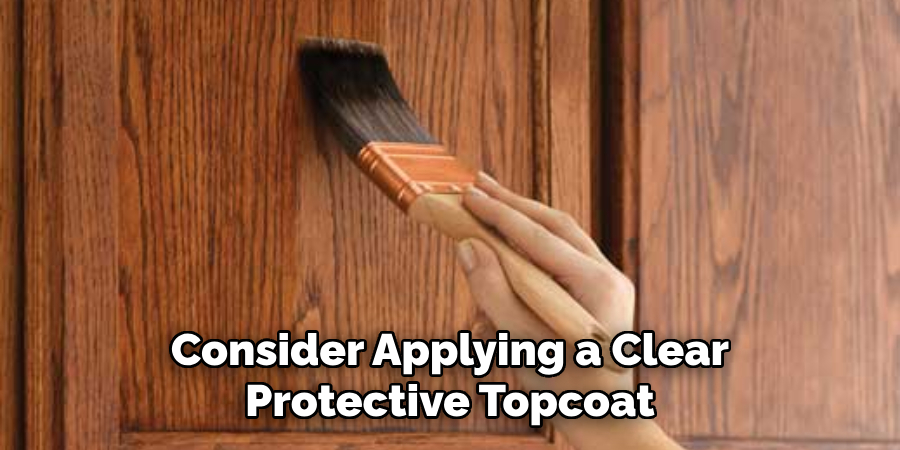
Step 6: Clean Up and Dispose of Materials
The final step is to ensure your work area is clean and all materials are disposed of properly. Gather all used brushes, rollers, and paint cans. Clean the brushes and rollers with warm soapy water, and allow them to dry thoroughly before storing them.
As for paint cans, ensure you dispose of them correctly. Many local waste collection facilities offer special disposal services for paint products due to their potentially harmful ingredients. Lastly, carefully remove and fold your drop cloths, ensuring any paint spills are dry to avoid smearing.
Step 7: Maintenance Tips
After successfully painting your wooden fireplace, it’s essential to know how to maintain its new look. Start by dusting it regularly with a soft cloth or a duster to prevent dust and soot accumulation. If there are any marks or spills, promptly wipe them with a damp cloth and mild detergent, then pat dry. Avoid using harsh chemicals or abrasive cleaning tools, as these can damage the paint.
Annually, inspect your fireplace for any signs of wear and tear, such as chipping or peeling paint. A quick touch up with the same paint will keep your wooden fireplace looking fresh and vibrant. Remember, taking care of your painted wooden fireplace is just as important as the effort you put into painting it!
Step 8: Enjoy Your Newly Painted Wooden Fireplace
Now that the painting job is done, it’s time to enjoy your newly refreshed wooden fireplace. Arrange your furniture to highlight this renewed centerpiece of your room. Consider accessorizing the mantel with tastefully chosen decor items that complement the new color.

These could include a stylish mirror, family photos, seasonal decorations, or plants. Remember, the fireplace isn’t just functional; it’s also a focal point of the living area, so let it shine! Don’t forget to take before and after photos to share your DIY prowess with friends and family or on social media.
After all, a job well done deserves recognition. Enjoy the warmth, charm, and refreshed aesthetic your painted wooden fireplace brings to your home.
Following these simple steps, you can easily paint your wooden fireplace and give it a much-needed makeover. Not only will the new look transform the atmosphere of your living space, but it’ll also bring warmth and character that you’ll enjoy for many years to come. With this guide as a reference, you now have all the tools needed to make your wooden fireplace stand out in all its glory!
5 Additional Tips and Tricks
- If the wooden fireplace has existing paint on it, remove any chipped and flaking paint with a wire brush.
- Before applying paint, you should lightly sand the fireplace’s surface to ensure a smooth finish.
- Apply a primer designed for wood surfaces before painting your wooden fireplace. This will help ensure that your paint sticks properly and prevents future peeling or chipping.
- Use a high-quality paintbrush for the best results when painting your wooden fireplace. Don’t be afraid to use several thin coats of paint instead of one thick coat – this will ensure that the finish is even and smooth.
- Once you are finished painting, allow the fireplace to dry completely before using it. If the weather permits, you can open a window or two to allow extra ventilation while allowing the paint to dry. This will help maximize the life of your fresh paint coat and ensure it looks its best!
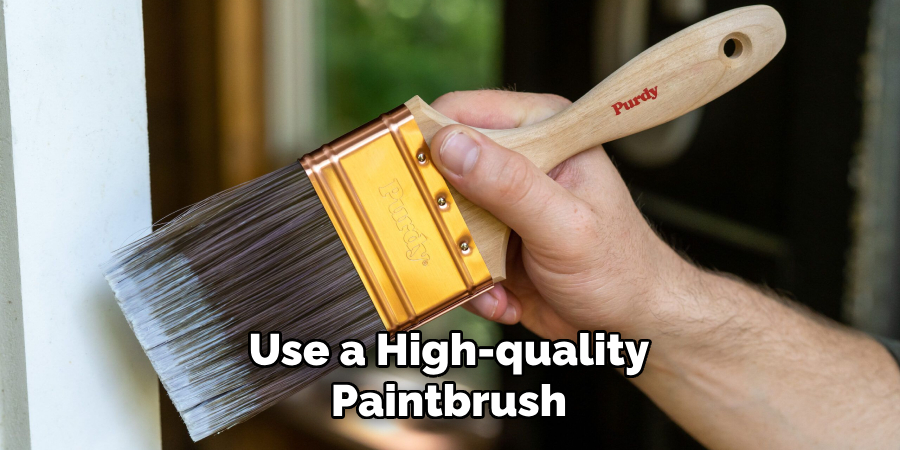
With these tips and tricks, you can confidently paint a wooden fireplace with beautiful results. Now that your fireplace looks brand new remember the finishing touches! Consider adding some decorative mantelpieces or shelving around the edges of the fireplace to give it an even more stylish look.
5 Things You Should Avoid
- Don’t use a paint roller on your wooden fireplace – this can leave an uneven finish and will not help the paint adhere properly to the wood.
- Avoid painting in direct sunlight or in extremely humid conditions, as this can cause the paint to dry too quickly and result in a poor-quality finish.
- Never use a low-quality paintbrush when painting a wooden fireplace – this can leave behind streaks and brush marks, resulting in an uneven finish.
- Never use a household detergent or other cleaning solution to clean the surface of your fireplace prior to painting, as this could damage the wood and create problems with adhesion.
- Don’t forget to sand any areas with a lot of raised grain before painting your fireplace – this will ensure that the paint adheres properly and creates a smooth finish.
By following these tips and avoiding common mistakes, you’ll be able to paint a wooden fireplace with beautiful results confidently!
Conclusion
As you can see, painting a wooden fireplace is much easier than you may have thought. With some preparation and the right materials, you can revitalize your existing fireplace to match any interior décor while giving it an extra layer of protection against the elements. Even if this is your first time undertaking a DIY job like this, it’s never too late to try!
Why not gather all the necessary supplies and give yourself one more project to experience? You will be surprised at how satisfying it feels when the job is done. Plus, you’ll be able to show off the handiwork for years to come proudly!
The article on how to paint a wooden fireplace gave you the information and tips you need for success. With these easy steps, you can transform your current fireplace into something beautiful – on your own!
Good luck, and happy painting!

